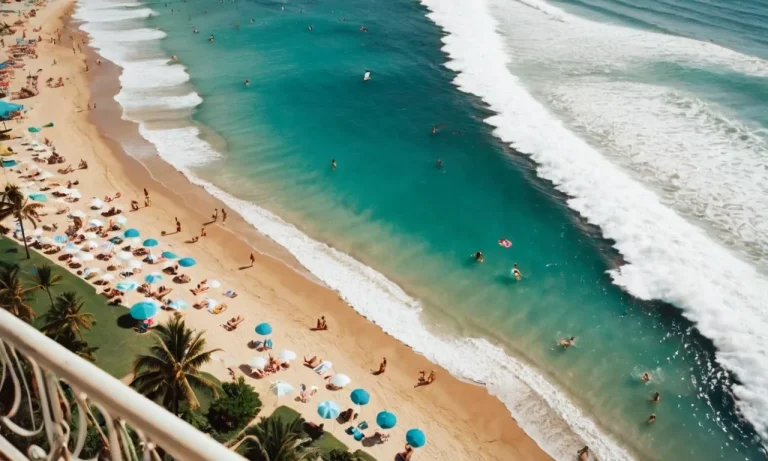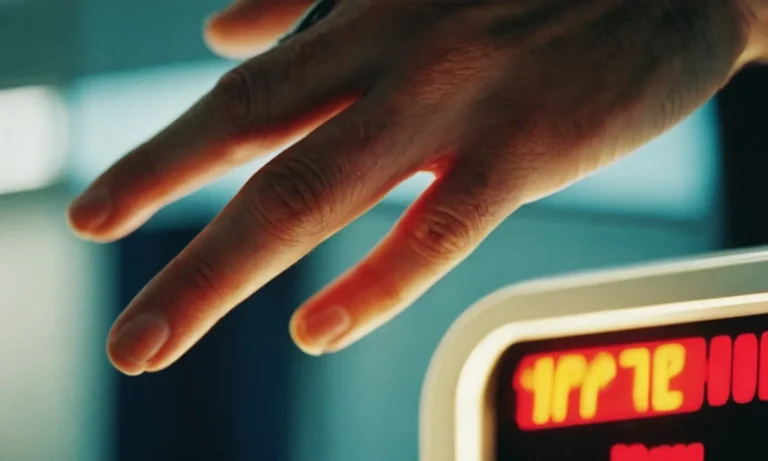What To Wear For Soccer Tryouts
Trying out for a new soccer team can be nerve-wracking. You want to make the best impression and show the coaches your skills, but you also need to be comfortable on the field.
If you’re short on time, here’s a quick answer: wear breathable, stretchy athletic clothing like shorts, t-shirt, and soccer cleats or athletic shoes.
In this comprehensive guide, we’ll go over everything you need to know about what to wear for soccer tryouts from head to toe, including details on shirts, shorts, socks, shoes, shin guards, and other accessories.
Tops – Breathable Shirts That Won’t Restrict Movement
T-shirt
When it comes to soccer tryouts, comfort and freedom of movement are crucial. A classic choice for many players is a simple T-shirt. Look for one that is made from a breathable fabric, such as polyester or mesh, as this will help keep you cool and dry during the intense physical activity on the field.
T-shirts with moisture-wicking technology are also a great option, as they can effectively pull sweat away from your body, preventing discomfort and potential chafing. Remember to choose a T-shirt that fits you well, allowing for easy movement without being too tight or too loose.
Sleeveless shirt
For those who prefer a little more freedom in their arm movement, a sleeveless shirt is an excellent choice for soccer tryouts. Not only does it allow for maximum range of motion, but it also helps to keep you cool in warm weather.
Sleeveless shirts can be found in various materials, including lightweight polyester blends or breathable mesh fabrics. Consider opting for a shirt with moisture-wicking properties to ensure you stay dry and comfortable throughout the tryout session.
Long sleeve compression shirt (for cold weather)
When heading to soccer tryouts in colder climates, it’s important to dress appropriately to stay warm without sacrificing mobility. A long sleeve compression shirt is a great option for these conditions.
Compression shirts are designed to fit snugly against the body, providing both warmth and support to the muscles. Look for one made from a thermal or moisture-wicking fabric to keep your body temperature regulated and prevent sweat from lingering on your skin.
Pair it with a short-sleeve jersey or a lightweight jacket for added warmth and flexibility.
Remember, the key is to choose tops that allow for comfortable movement and help regulate your body temperature, whether it’s a T-shirt, sleeveless shirt, or long sleeve compression shirt. Dressing appropriately for soccer tryouts will not only enhance your performance but also ensure that you can focus on showcasing your skills without any distractions.
Bottoms – Stretchy Athletic Shorts or Pants
Soccer shorts
When it comes to soccer tryouts, having the right bottoms can make a big difference in your performance on the field. Soccer shorts are specifically designed to provide comfort and flexibility during intense physical activity.
They are typically made of lightweight and breathable materials, allowing for better ventilation and reducing the risk of overheating. Soccer shorts also feature a loose fit, which allows for unrestricted movement while running, kicking, and changing directions.
Don’t forget to choose a pair of soccer shorts that fit you well and provide adequate support.
Athletic shorts
If you don’t have soccer-specific shorts, you can also consider wearing athletic shorts for tryouts. Athletic shorts, similar to soccer shorts, are designed to provide comfort and freedom of movement during physical activities.
They are typically made of stretchy and moisture-wicking materials, which help keep you dry and comfortable throughout the tryout session. Athletic shorts come in various styles and lengths, so choose a pair that suits your preference and allows you to move freely on the field.
Soccer pants (for cold weather)
If you are trying out for soccer during colder months or in a region with low temperatures, it’s important to dress appropriately to stay warm during tryouts. In such cases, consider wearing soccer pants.
Soccer pants are typically made of thicker materials that provide insulation and protect your legs from the cold weather. They often have a slim-fit design to prevent any interference with your movements on the field.
Opt for soccer pants that are comfortable, allow for easy movement, and provide adequate warmth to ensure you can perform at your best, even in chilly conditions.
Remember, the right choice of bottoms can greatly enhance your performance during soccer tryouts. It’s essential to prioritize comfort, flexibility, and appropriate attire for the weather conditions. So, whether you opt for soccer shorts, athletic shorts, or soccer pants, make sure to choose bottoms that allow you to move freely and confidently on the field.
Footwear – Cleats or Athletic Shoes with Grip
When it comes to soccer tryouts, having the right footwear is crucial for performance and safety on the field. The choice between cleats and athletic shoes with grip depends on the type of surface you will be playing on. Here are some options to consider:
Soccer cleats
Designed specifically for soccer, cleats are the preferred choice for most players during tryouts. These shoes feature studs on the outsole that provide excellent traction on natural grass surfaces. The studs help prevent slipping, allowing players to make quick turns, accelerate, and stop with ease.
Additionally, soccer cleats offer better stability and support for the ankle, reducing the risk of injuries during intense gameplay.
Turf shoes
If the tryouts will take place on artificial turf, wearing soccer cleats may not be the best option. Turf shoes, also known as astro turf shoes, are specifically designed for synthetic turf surfaces. They have a rubber outsole with numerous small, nub-like studs that provide excellent grip and prevent damage to the turf.
Turf shoes also offer better cushioning and shock absorption, making them a comfortable choice for players who will be spending a significant amount of time on artificial turf.
Athletic running/cross-training shoes
If the tryouts are being held on a hard surface or indoor court, wearing soccer cleats may not be suitable. In such cases, athletic running or cross-training shoes with good grip can be a viable option.
These shoes provide the necessary traction and support for running, jumping, and making quick movements. While they may not offer the same level of grip as cleats or turf shoes, they are still a practical choice for tryouts on non-grass surfaces.
Ultimately, the choice between cleats, turf shoes, or athletic shoes with grip depends on the playing surface. It is important to check with the tryout organizers or coach to determine the appropriate footwear.
Remember, wearing the right shoes can significantly enhance your performance and reduce the risk of injuries.
Socks – Moisture Wicking Athletic Socks
When it comes to soccer tryouts, wearing the right socks is just as important as choosing the right shoes. Moisture wicking athletic socks are a great choice for soccer players, as they help keep your feet dry and comfortable throughout the game.
These socks are designed to wick away sweat and moisture, preventing blisters and reducing the risk of foot odor.
Crew socks
Crew socks are a popular option for soccer tryouts. They are longer in length, typically reaching halfway between the ankle and knee. Crew socks provide additional support and protection for the calf muscles, reducing the risk of muscle strain or injury.
They also offer a snug fit, preventing the socks from slipping down during intense movements on the field.
Ankle socks
Ankle socks are another suitable choice for soccer tryouts. These socks are shorter in length, reaching just above the ankle. They provide a lightweight and breathable option for players who prefer a lower sock profile.
Ankle socks also allow for greater freedom of movement and flexibility, which can be advantageous during quick turns and fast-paced plays.
Knee-high socks (for shin guards)
For players who wear shin guards, knee-high socks are a must-have. These socks cover the entire calf and reach up to the knee, providing ample protection for the shin guards. In addition to protecting the player’s legs, knee-high socks also serve as a fashion statement on the field.
Players can choose from a wide range of colors and designs to showcase their individual style.
When selecting moisture wicking athletic socks for soccer tryouts, it’s important to choose a pair that fits properly. Ill-fitting socks can cause discomfort and hinder your performance on the field. Look for socks that offer a snug yet comfortable fit, with cushioning in the right areas to provide support and reduce impact.
Remember, wearing the right socks is just one component of a successful soccer tryout. It’s also important to wear appropriate soccer attire, including shorts, a jersey, and cleats. By combining the right clothing and gear, you’ll be ready to showcase your skills and impress the coaches during tryouts.
Accessories – Guards, Headbands, Braces, Etc
Shin guards
Shin guards are an essential accessory for soccer players, especially during tryouts. They provide protection to the shin bone, which is vulnerable to injuries due to tackles and kicks. Shin guards are typically made of durable materials, such as plastic or fiberglass, and are designed to absorb impact and distribute the force across a larger area.
It is important to choose shin guards that fit properly and provide adequate coverage. Some players prefer slip-in shin guards, while others opt for shin guards that are attached to compression socks. Whichever type you choose, make sure they are comfortable and securely fastened.
Headband
A headband can be a useful accessory for soccer players, especially those with long hair. It helps to keep the hair out of the player’s face, allowing for better visibility and preventing distractions during the game.
Additionally, a headband can absorb sweat and prevent it from dripping into the eyes, ensuring clear vision throughout the tryouts. When selecting a headband, consider choosing one made of moisture-wicking material to keep your head cool and dry.
Some headbands also have silicone strips on the inside to prevent them from slipping during intense movements.
Ankle brace (if needed)
Ankle braces are commonly used by soccer players who have a history of ankle injuries or weak ankles. They provide additional support and stability to the ankle joint, reducing the risk of sprains and other injuries.
If you have had ankle issues in the past or if you have weak ankles, it is advisable to wear an ankle brace during soccer tryouts. Ankle braces come in different styles, including lace-up, strap-on, and sleeve-style braces.
It is essential to choose an ankle brace that fits well and provides the necessary support without restricting your range of motion.
Remember, while accessories like shin guards, headbands, and ankle braces can enhance your performance and protect you from injuries, it is also important to focus on your skills and abilities during soccer tryouts.
Dressing appropriately and wearing the right accessories can give you an edge, but ultimately, your performance on the field will be the determining factor.
Conclusion
When trying out for a new soccer team, wearing the right athletic gear can give you the confidence and comfort needed to play your best out on the field. Focus on breathable, stretchy clothing that won’t restrict your movement during drills, athletic shoes with proper grip, and accessories like shin guards to keep you protected.
With this comprehensive guide on what to wear, you’ll feel prepared and ready to show the coaches your soccer skills at tryouts. Best of luck!








